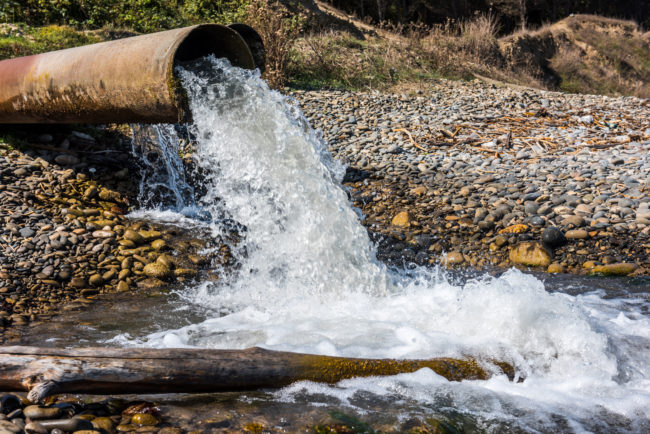The U.S. Environmental Protection Agency (EPA) has begun soliciting information for a new study that will examine how numerous entities across the U.S., including industry, stakeholders, local officials, energy providers, states, and the EPA itself, regulate and manage wastewater produced during the oil and gas extraction processes.
The goal of the study is to develop better and more effective ways to dispose of, recycle, or reuse the wastewater generated during extraction. By way of example, and with regard to hydraulic fracturing, about half of the freshwater used is recovered as “flow back,” or water that flows back to the surface along with natural gas. This process yields significant amounts of “brine,” which is water containing a high salt content, as well as chemicals, heavy metals, and other material. Due to these contents, brine wastewater mixture is difficult to repurpose and expensive to treat.
Complicating the issue even more is the sheer volume of effluent that’s produced. Up to 60 percent of the water injected into a wellhead will discharge back out of the well shortly thereafter as flow back occurs. Thereafter, for the life of the well, it can discharge up to 100,000 gallons or more of wastewater, which theoretically could be captured and disposed of, or recycled. Through the new EPA initiative, new disposal management strategies are to be developed and eventually implemented.
Currently, the majority of wastewater is managed by disposing of it using a practice known as underground injection, which is a costly process and involves injecting the wastewater into a regulatory-approved subsurface rock formation. One of the main detriments of the reinjection disposal methodology is that the water is wasted and cannot be accessed or used again. Others have raised concerns regarding wastewater injection and whether said injections are connected to seismic activity in certain geological formations.
Other ideas have been pondered as alternatives to deep well injection. For example, wastewater could be disposed of via a surface water discharge system, which involves discharging wastewater to surface water bodies such as rivers, lakes or reservoirs. While this is considered a low cost alternative, it must be done in compliance with environmental regulations, which would involve extensive permitting.
Evaporation ponds are also considered an option, whereupon brine is accumulated in a surface impoundment or pond which allows the brine to further concentrate as water evaporates into the atmosphere. There’s no federal permit required for evaporation ponds; however, some states require monitoring. Wastewater could also be discharged into sewer systems, but they would have to comply with treatment plant requirements and the amount of heavy metals contained in brine could be too high for those plants to remove.
Some states and stakeholders have advocated reusing the wastewater, particularly in water-scarce areas of the country, and are pushing to determine what the proper treatment steps are to remove chemicals and metals. Other potential alternatives include land application, where brine is used to irrigate. Some have even considered using wastewater as a de-icing agent or to control dust in drier climates during the summer months.
The focus of the EPA’s study will be to engage with stakeholders to consider available approaches to manage wastewater from both conventional and unconventional oil and gas extraction at onshore facilities. The study will address questions, such as how existing federal approaches to produced water management under the Clean Water Act can interact more effectively with state regulations, requirements or policy needs. The EPA is particularly interested in working with its regulatory partners at the state level, who are at the forefront of the changing industry, and often manage complex water allocation programs under state law.
We’ll continue to follow this initiative and provide updates on future decisions concerning wastewater treatment.

